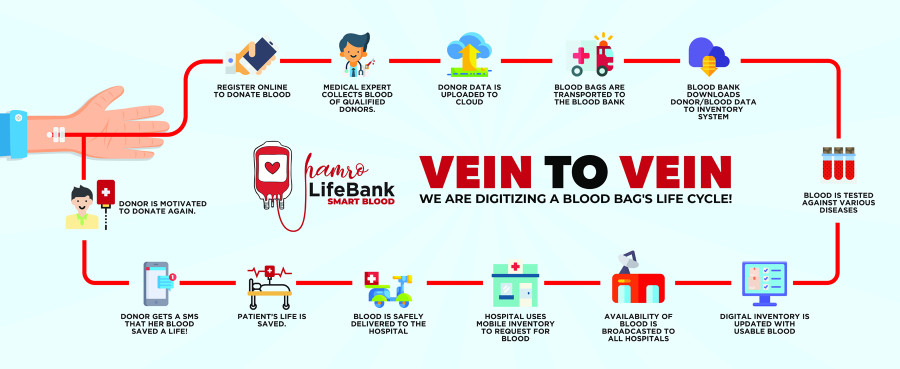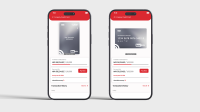Money
To address the blood supply and demand gap, Hamro LifeBank maintains a digital database
The company has so far collected a database of some 18,000 donors which is being updated on a daily basis.
Krishana Prasain
Hamro LifeBank, which started a year ago, has been providing blood-related information and trying to digitize blood banks and motivating donors through their vein-to-vein initiative. The major goal of the company is to be a paperless vein-to-vein transfusion.
The scarcity of blood most of the time is the main reason behind starting Hamro LifeBank, said Rumee Singh, the founder and chief executive of the company. “From a gynaecologist friend, I heard about a case where a patient lost his life after not getting a donor’s blood on time. The patient’s family had to arrange for the blood which is done by the hospitals themselves, in developed countries,” she said.
Singh decided to do something about it and started doing her research.
Shristi Piya, director of Hamro LifeBank conducted her research by talking to different blood banks, visiting different hospitals, talking to the patient and their families, blood donor groups, and different stakeholders. After doing research, Singh and her team started to contemplate on how they can use technology to help address the issue of blood crisis.
“We found that the blood banks are still maintaining their records on paper and it becomes time-consuming in cases of emergency,” said Singh. “There wasn’t any organized approach to maintain such information.”
So, to run the system better, Singh thought of digitizing the process to make matters convenient.
Currently, the company is collecting information through different blood banks regarding blood groups, stocks available and blood dispatched.
“The hassle of calling here and there will be less if the patient calls us as we can provide better information as per the data we have,” said Singh. “Real inventory and the right information at the right time is what we strive for.”
Enquiries for blood can be made through Hamro LifeBank hotline number, 9801230045, or through a request on its official Facebook or Instagram pages or through their website, hamrolifebank.org.
The company organized more than 50 smart blood donation events last year. They tracked information on patients online and connected with different blood banks and hospitals like Red Cross, Maternity Hospital, Nobel Hospital, Mediciti, Himal and Grande.
“Though we are manually tracking blood lying with the blood banks, we aim to make a digital inventory of what’s available, should the need arise,” said Singh.
She said that the company also sends text messages to motivate the blood donors that their blood has saved a life. “The intention behind sending SMS is that we want to engage and motivate the donors and retain them.”
Singh and her husband Santosh Shrestha, after their long stay in the US, were looking for a business opportunity that could have a social impact in Nepal. They started the Rumsan group of companies which is operating different businesses.
Last year the company raised more than Rs1.3 million from a fundraising event in the US. “We are looking for a sustainable model for Hamro LifeBank and for that we have digitizing blood bank services,” said Singh.
Hamro LifeBank is trying to engage with the governing bodies to create a cohesive system to address blood requirements, their supplies and recipients.
We are trying to create a national donor database,” said Singh.
The company has so far collected a database of some 18,000 donors which is being updated on a daily basis.




 12.12°C Kathmandu
12.12°C Kathmandu













%20(1).jpg&w=300&height=200)
